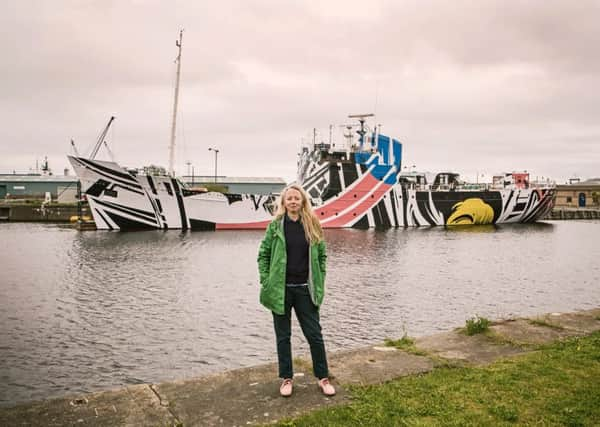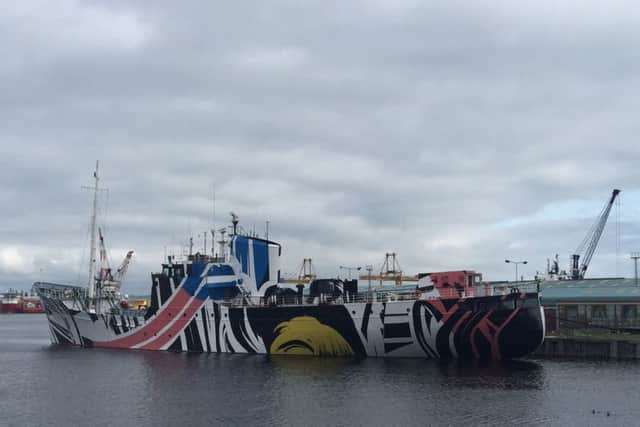Modern-day '˜Dazzle Ship' pays tribute to women's WWI efforts
This article contains affiliate links. We may earn a small commission on items purchased through this article, but that does not affect our editorial judgement.


Turner Prize nominee Ciara Phillips has overseen the transformation of a former lighthouse service ship into one of the nation’s biggest works of arts.
Unveiled ahead of the 100th anniversary of the Battle of Jutland, the biggest naval conflict of the war, the transformed MV Fingal will be in place for several months in Leith Docks, where many of the original “Dazzle Ships” were based a century ago.
Advertisement
Hide AdAdvertisement
Hide AdDeveloped by marine artist Norman Wilkinson, the technique saw more than 2,000 ships covered in disorienting shapes, which helped prevent their range, speed and direction of travel from being properly tracked.


Phillips, who has spent around six months working on the project, has created a design which reflects the unsung contribution of the mostly female students who created designs for the “Dazzle Ships” during the war.
However her design includes a morse code message – reading “Every Woman A Signal Tower” – in tribute to the women who worked as telegraphers and signallers during the war. The new-look vessel, which dates back to 1963, will have a starring role in Saturday’s programme of Battle of Jutland events, which will be staged on and around the Firth of Forth.
She will appear alongside HMS Kent, before returning to the docks where she will remain over the summer before being converted into a floating hotel alongside the Royal Yacht Britannia.
DOWNLOAD THE EDINBURGH EVENING NEWS APP ON ITUNES OR GOOGLE PLAY


The MV Fingal, the last vesset to be built by the Blythswood Shipping Company in Glasgow, was originally registered in Leith Docks, but worked mainly out of before working out of Oban and Orkney for the next 36 years.
Ms Phillips, who was born in Canada but now lives and works in Glasgow, was commissioned for the project as part of 14-18 Now, the UK-wide cultural programme to mark the centenary of the First World War.
Advertisement
Hide AdAdvertisement
Hide AdLeith’s new Dazzle Ship, which a seven-strong team of female painters has converted, has been specially designed to glow in the dark at its location in the Albert Dock, close to the Scottish Government headquarters and the Ocean Terminal shopping centre. She said: “I’d heard of Dazzle Ships before, but I don’t think they are that well known. Most people I’ve spoken to about them have said: ‘what’s that?’
“I really had free reign to do whatever I wanted with it. I went away and started to learn a bit more about them. I saw a photograph of female students at the Royal Academy of Arts in London working on small wooden models.
“It made me think about the role of female artists in the production of the original ships. But I also learned a lot more about the wider contribution of women in the war. It was really interesting to learn that a million women worked in munitions factories during the war and how the number of women entering the workplace had an impact on the suffrage movement. When you think about the war, you think about the people who went off, not those who stayed and worked here.”
The Dazzle Ship Scotland project is one of several special one-off commissions for this year’s Edinburgh Art Festival, which takes work into unusual spaces and opens up historic sites to the public each year.
The pavements beneath a bridge on Calton Road in the Old Town will be lit up in neon, the interior of the Robert Burns monument on Calton Hill will become home to a celebration of the female nude and a film paying tribute to Irish republican leader James Connolly will be shown inside a historic church near his Cowgate birthplace.
The old Royal High School on Calton Hill will host a sound installation exploring the impact of the war in India and Pakistan.